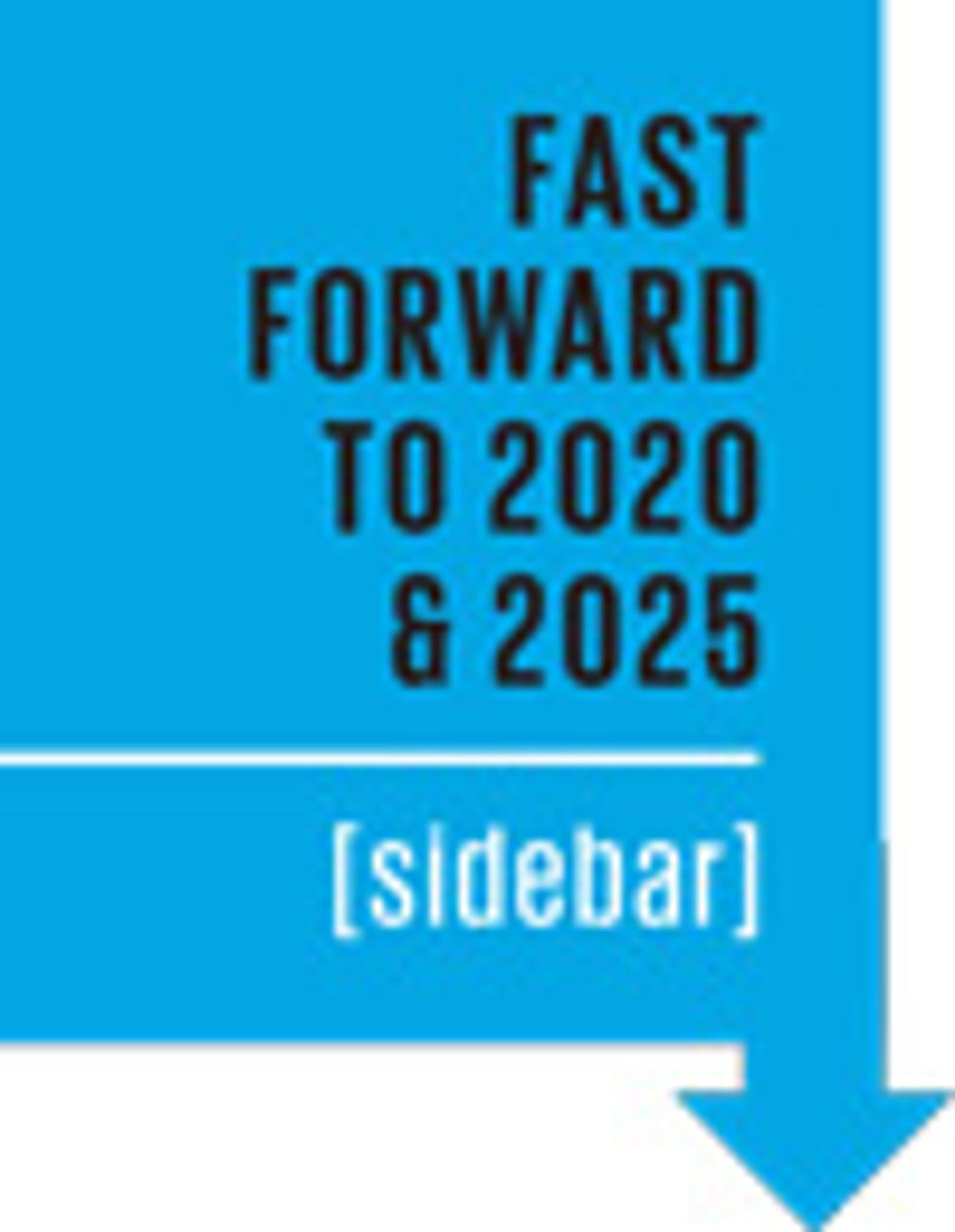Europe’s Smart Highway Will Shepherd Cars From Rotterdam to Vienna
Holland, Germany, and Austria’s Cooperative ITS Corridor is setting standards for the world
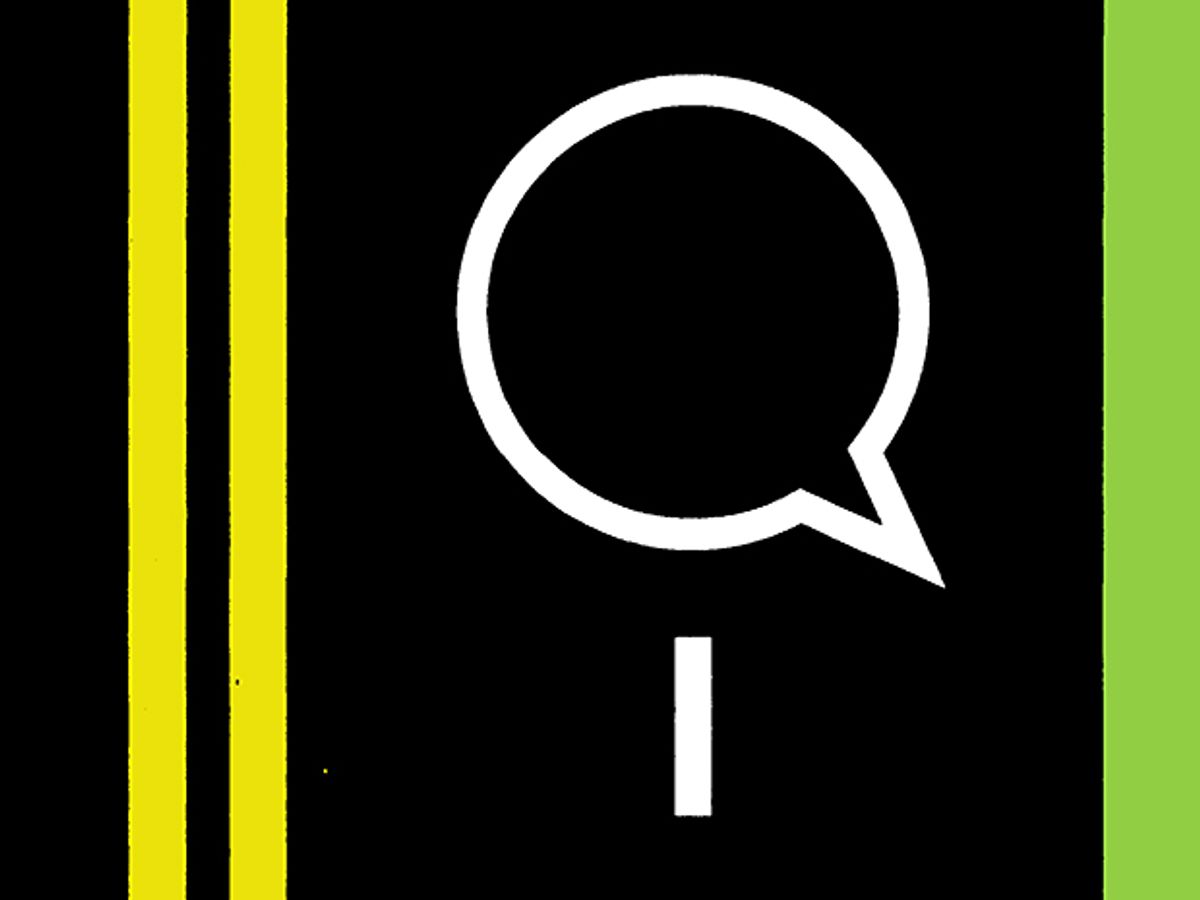
Seeing taillights flash up ahead, you slam on the brakes, thus sending the signal you’ve just received to the car behind, with a lag. That car relays the same information with a lag of its own, creating a monstrous traffic jam kilometers down the line.
That’s the sorry state of car-to-car communication today. Drivers must be totally alert; yet even so, they can’t help triggering perverse results. This problem will start to end this decade, as cars begin to communicate with one another in a way that allows each to see through the eyes of those that have gone before. The roads will be safer, traffic jams fewer, and cars more autonomous.
But because the early adopters won’t have other cars to talk to, many traffic specialists want to focus first on giving voice to the roads. In this scenario, smart roads—that is, intelligent transportation systems, or ITS—will provide a payoff from the start. Later, as talking cars proliferate, the vehicle itself will become the center of the conversation.
By far the most ambitious smart-road project is to begin next year in Europe. It’s called the Cooperative ITS Corridor, and on day one it’s supposed to shepherd cars from Rotterdam through Munich, Frankfurt, and on to Vienna without a single interruption in the initial, basic service: warning drivers of upcoming roadwork and other obstacles. And because the Corridor will be the first to harmonize smart-road standards among different countries, its choices are meant to be a template for us all.
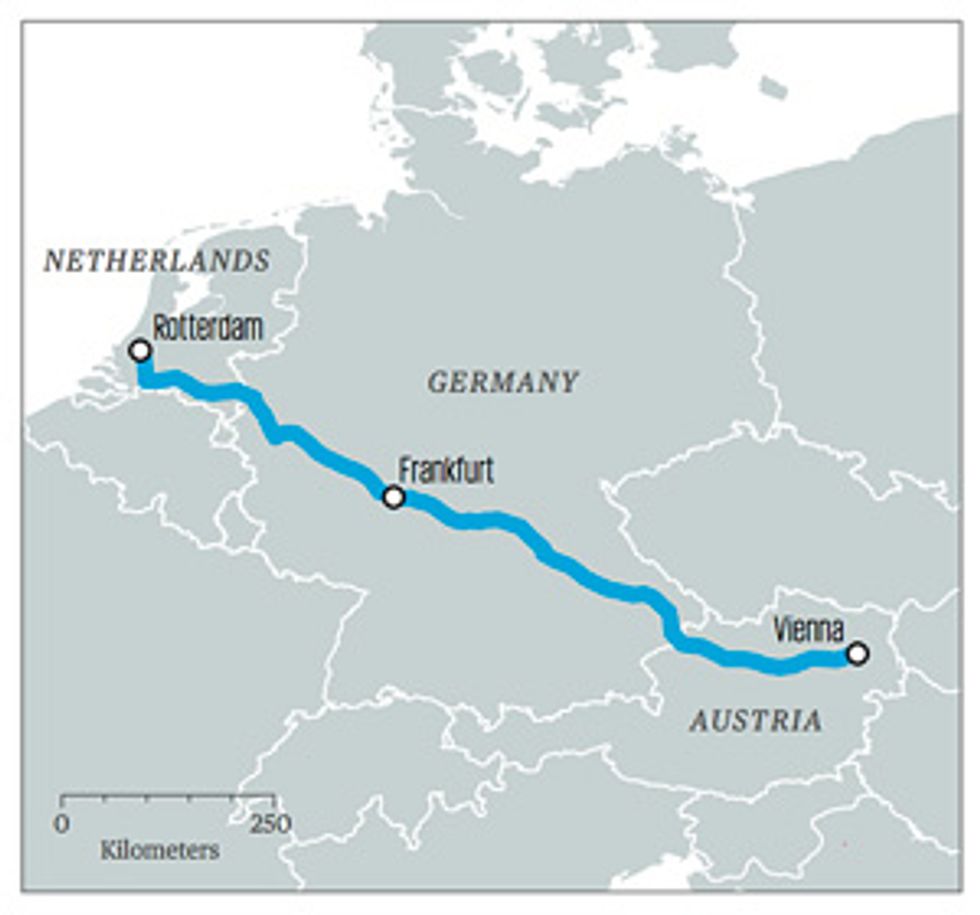
“There are tests everywhere, but this is not a test; this is the first real deployment over three countries in the world,” says Frans op de Beek, a senior traffic advisor for the Dutch Ministry of Infrastructure and the Environment. He and his minister helped start the tripartite discussions with their counterparts in Germany and Austria that ended in their signing a formal agreement in June 2013.
Many countries have said they’ll eventually hook their local smart-road projects to the Corridor. France, Poland, and the Czech Republic will likely be among the first. The true leader is Japan, whose outstanding smart-road systems already tell drivers about traffic conditions and speed limits by collecting and disseminating data through radio and infrared transceivers.
“They have a big advantage: They are an island,” notes Marko Jandrisits, an official in the Austrian transport ministry. “They have harmonized. They don’t have to care about partners; they can do all the regulations easily.”The United States lags behind just about everyone, in part because its Highway Trust Fund is practically broke, unable to pay for pothole repairs let alone the automation of the asphalt. That’s why the U.S. Department of Transportation has preferred to fund small research projects (notably a test bed for intelligent roads and cars in Ann Arbor, Mich.) and to mandate a purely vehicle-to-vehicle communications standard. That strategy shifts the cost to the auto companies and their customers.
Yet even Europeans are sensitive about cost. No official interviewed for this article was prepared to cite figures, nor would any of them say that user fees were even being considered as a means to finance the expansion of the Corridor into a pan-European system. That expansion will include additional roadways, new features, and improvements in the core services.
Even simple roadwork warnings aren’t all that simple to handle internationally. “One of the projects is to mount warning units on roadwork vehicles to broadcast information about an obstruction up ahead—it would go behind a grass cutter, for example,” says Gwen van Vugt, director of the mobility center of Tass International, a for-profit research company in the Netherlands. “Where do you need to mount the antenna so that you will not block communication?”
Short- Range Car-to- Road Frequencies
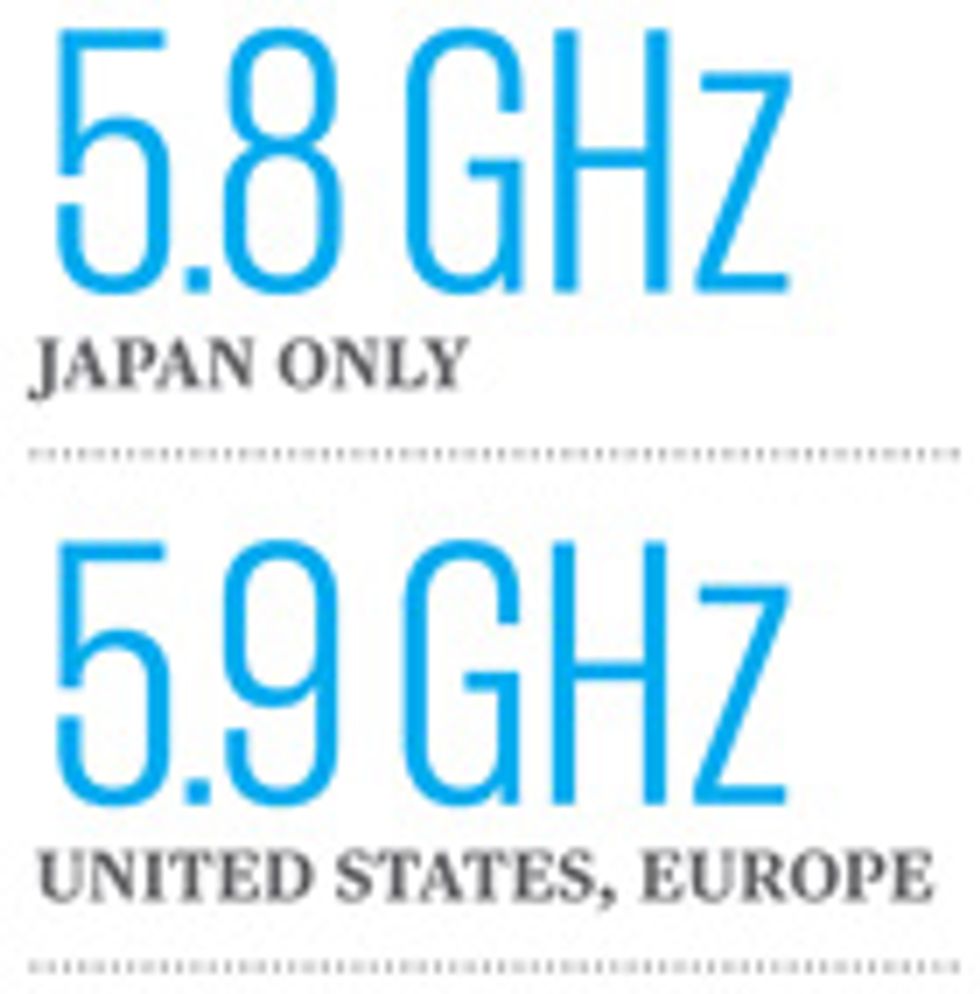
Tass answers such questions on its test bed, an 8-kilometer stretch of road in Helmond that is studded with sensors far more capable than the Corridor will have. “We measure the exact position of vehicles within 1-meter accuracy, 10 times per second, then compare this ground truth with the actual system being tested,” Van Vugt says. “There are cameras every 100 meters and Wi-Fi antennas every 500 meters—about twice as dense as what you’d have on a normal motorway. And we put Wi-Fi stations about on the same poles as the antennas and camera systems.”
One thing he’s learned is that you need just a small number of talking cars to improve the flow of traffic.
Take the problem caused by a car that suddenly brakes in front, forcing you to brake a few seconds later, and so on down the line of cars behind you. The resulting shock wave, as it’s called, may even gain in amplitude and finally form a standing wave. The result is a long-lived traffic jam at some random spot, a phantom-wave phenomenon worthy of the quantum world, though it’s made of massive cars and trucks.
“You can stop it,” Van Vugt says, “by telling people a kilometer or more behind me to reduce their speed, for example dropping from 120 kilometers per hour to 110. It completely dampens the shock wave—we’ve proven it with 100 vehicles, in Helmond.”
That particular service, he says, is more important to road managers in the Netherlands than to their counterparts in Germany. But though national priorities may differ, base stations will always work across borders.
Officials from Germany’s smart-road program, who responded to questions by e-mail, provided few details on how their approach might differ from that of their partners. But according to several sources in both the Netherlands and Austria, the Germans are perhaps even more intent on jump-starting purely vehicle-to-vehicle communications—perhaps because, among the three countries, only Germany has an auto industry.
The Dutch are the prime movers in the Corridor project, and they already provide a lot of infrastructure-to-car information on dashboard GPS navigators, such as TomTom. That’s no surprise: Holland lives and dies by infrastructure like dikes and waterworks. Indeed, according to Op de Beek, the Infrastructure Ministry may one day apply Corridor standards to the canals.
A few years after the rollout, he says, other kinds of road information will be brought from the roadside to the dashboard. “We want to get rid of many of the ‘This way to Amsterdam’ signs,” Op de Beek says. “You need just the last one; there’s no need to forewarn drivers!”
It’s also part of the reason why smart-road experiments back in the 1990s never led anywhere. Those roads were larded with magnets, which cars were able to sense.
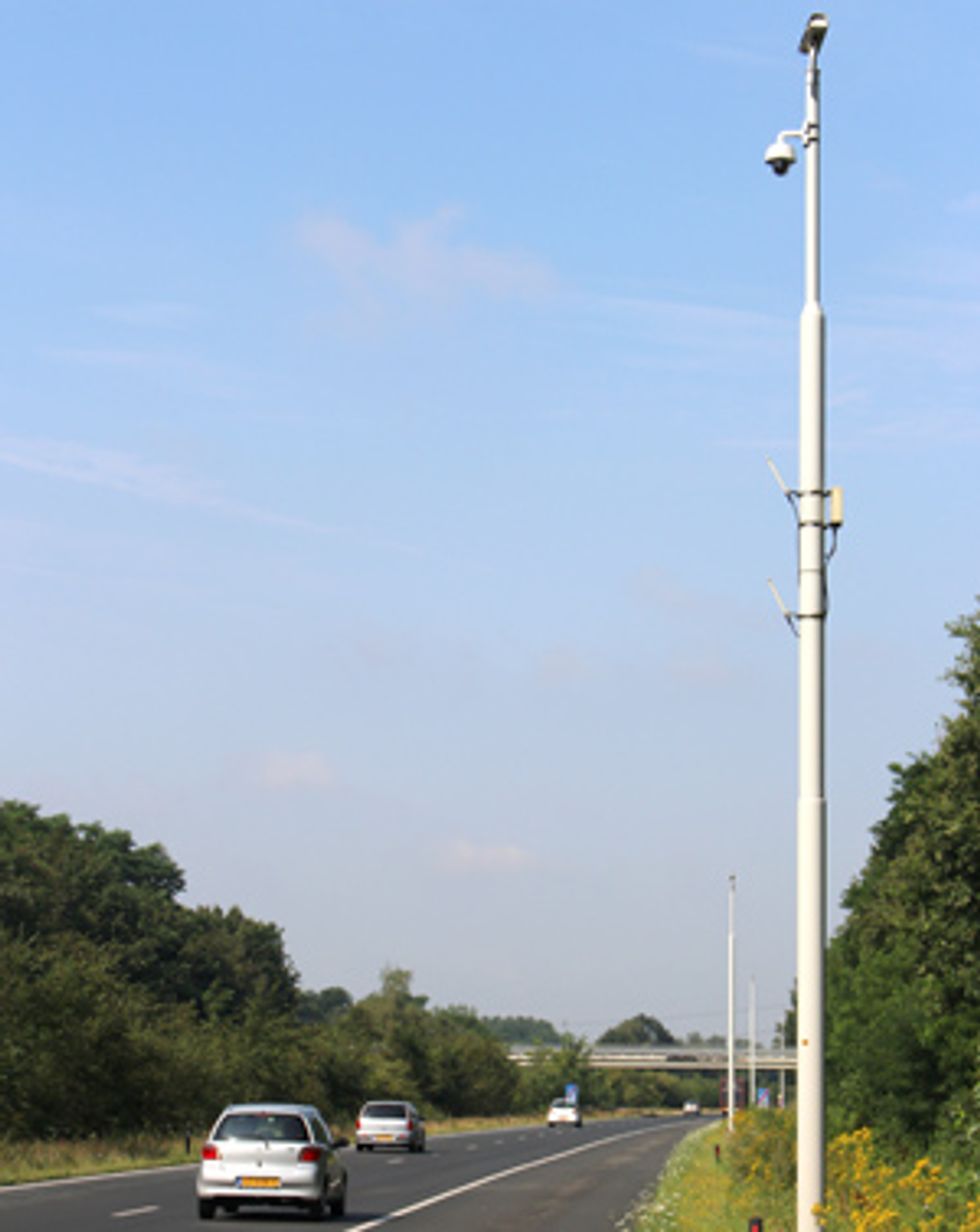
“But it never went past the proof of concept,” says Richard Wallace, at the Center for Automotive Research, in Ann Arbor. “We didn’t have the right technology to do it in a true deployment; since then, we’ve come a long way.”
The techie parts of the Corridor include sensors, short- and long-distance transmitters, and in-car equipment that presents information to the driver as sounds or images. Local transmitters will use IEEE 802.11p, a band designated for vehicles. “It has its own standards, very analogous to Wi-Fi,” Wallace says. “Very high speed, low latency, short distance—maybe 300 meters, maybe longer on an absolutely flat plane.”
Quickness is key: When you’re moving at 200 kilometers per hour, you haven’t got a lot of time to transmit data. This glorified Wi-Fi will mainly carry real-time data that bear on safety.
“The LTE bandwidth could be used to collect probe data [on car speed and position] for traffic management,” he adds. “You could have a separate cellular subscription, or you marry the phone you have already to the car.”
The one component that must still be agreed on is the coordinating station for large chunks of roadway—a central ITS station. “Each traffic-management center will have one,” says Anto Komarica, an engineer at Vienna’s Kapsch TrafficCom, which supplies road-telematics equipment. “You could have one for an entire country, like Austria; in Germany you could have one for each state.”
That’s a regulatory issue. For engineers, though, there’s only one real problem: how to safeguard communications. Today’s cars are dripping with communications channels, each of which offers a way into critical systems like engine controls, antilock brakes, and even the actuators that lock the doors and lower the windows. That’s a lot of targets, and smart roads threaten to hook them together and make them vulnerable to attackers, just as the Internet has done with the world’s desktop computers.
The solution to these concerns for the Corridor, as well as for the Internet of Things in general, will no doubt involve some clever forms of cryptography.
“Security will use public-key encryption, and the concepts for it now are state of the art, especially in Germany, where there is a huge effort,” Komarica says. “The question is, Do we need it on a European level, and who is operating it? The current concept foresees that there could be different [public keys] for different routes or in each member state, or even for every car manufacturer.”
Unhappily, regulators must set standards now and discover their errors later, when it will be hard to change things. That early-adopter penalty may explain why the European community is willing to allow three of its members to serve as guinea pigs in 2015. Even if the project achieves all of its objectives, the Corridor’s standards may not form the final template but only a first draft.
Fast Forward
Cars Will Talk, Then Collaborate
Vehicles will just share data at first. Later they will cooperate more actively
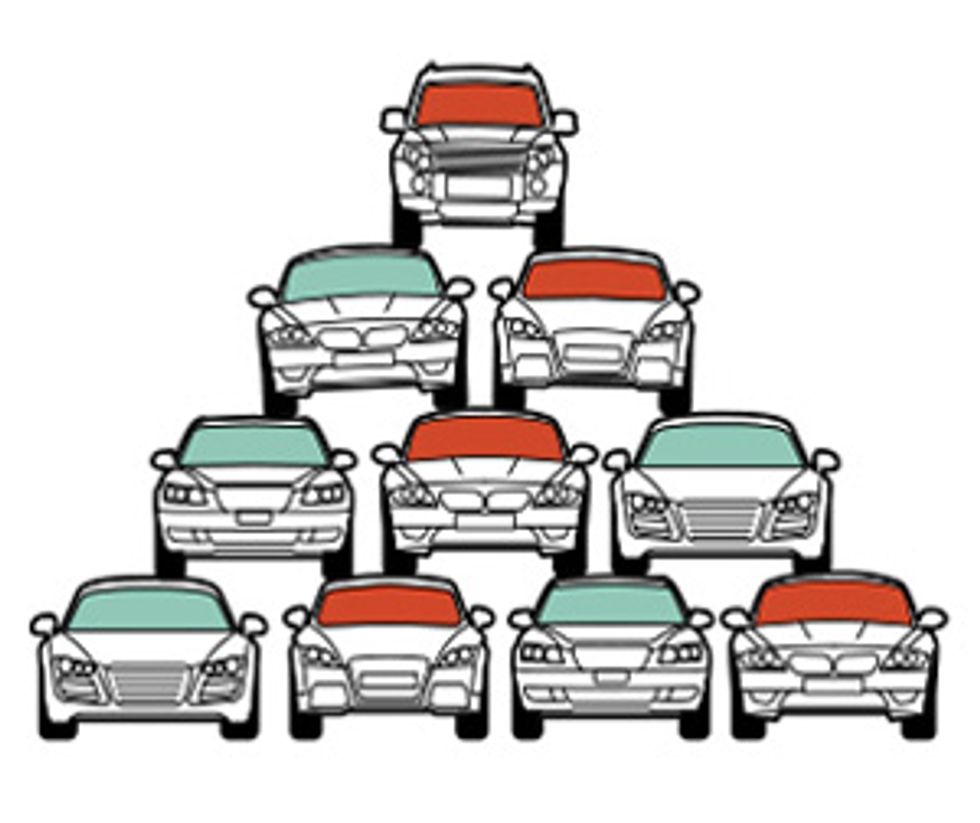
By 2020: Within a few years, the Cooperative ITS Corridor will expand to include other European countries. Instead of relying on signage, drivers will begin to get local information on things like speed limits and upcoming exits beamed directly into their cars.
New cars will be capable of communicating both with other vehicles and the roadway infrastructure, and older ones may have to be retrofitted. The pattern will unfold around the world: According to a recent study by McKinsey & Company, global sales of car communications equipment will rise nearly fivefold by 2020, to €170 billion.
Cars will query cars, and the road will query them all, gaining “probe data” with which central stations can control the flow of traffic. For instance, by changing the speed limit so that a line of cars will slow down together, road managers can ease a traffic problem without causing a backward-propagating shock wave.
In other parts of the world, like the United States, the necessary road infrastructure still won’t be in place. But even so, groups of vehicles may stand in for it by assembling themselves ad hoc into moving networks.
By 2025: Beginning in a decade or so, the Corridor and its ilk will bypass the driver and go straight to the car’s brain. It will issue both advice and commands, creating the illusion that cars are pretty much driving themselves.
Because cars will keep to their lanes, lanes will be narrower; because cars will avoid frontal collisions, lead distances will shrink. The carrying capacity of the roads will rise. Cars will swarm like bees, but each one will also act like a horse.
“We’ll have two modes, loose reins and tight reins,” said design guru Don Norman, speaking in July at a smart-car symposium. “Loose reins: The horse is in control and takes you home. Tight reins are to force the horse to do things that are uncomfortable—but not dangerous.”
The edges of the road will fade into the built-up world. A pedestrian walking down the street toward the curb will be noted by the sidewalk, which will speak to the road, which will warn the car. You’ll never know why your car is gently braking. Nor will you really need to know. —P.E.R.
This article originally appeared in print as “Thus Spoke the Autobahn.”
